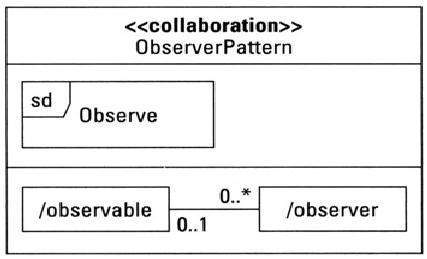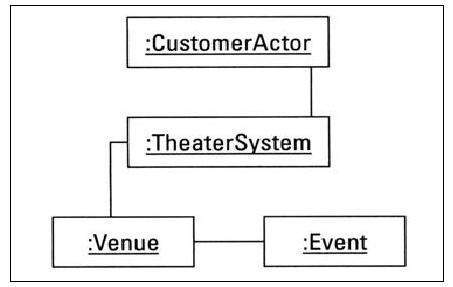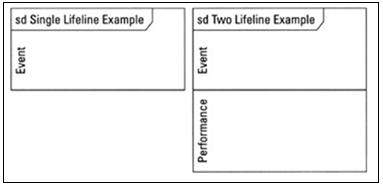UML 2.0 adds the definition of formal and completely defined semantics. This new possibility can be utilized for the development of models and the corresponding systems can be generated from these models. However, to utilize this new dimension, a considerable effort has to be made to acquire knowledge.
New Dimensions in UML 2.0
The structure and documentation of UML was completely revised in the latest version of UML 2.0. There are now two documents available that describe UML −- UML 2.0 Infrastructure defines the basic constructs of the language on which UML is based. This section is not directly relevant to the users of UML. This is directed more towards the developers of modeling tools. This area is not in the scope of this tutorial.
- UML 2.0 Superstructure defines the user constructs of UML 2.0. It means those elements of UML that the users will use at the immediate level. This is the main focus for the user community of UML.
UML infrastructure is used to −
- Provide a reusable meta-language core. This is used to define UML itself.
- Provide mechanisms to adjustment the language.
- Provide better support for component-based development.
- Improve constructs for the specification of architecture.
- Provide better options for the modeling of behavior.
There is another dimension which is already proposed in this new version. It is a proposal for a completely new Object Constraint Language (OCL) and Diagram Interchange. These features all together form the complete UML 2.0 package.
Modeling Diagrams in UML 2.0
Modeling Interactions
The interaction diagrams described in UML 2.0 is different than the earlier versions. However, the basic concept remains the same as the earlier version. The major difference is the enhancement and additional features added to the diagrams in UML 2.0.UML 2.0 models object interaction in the following four different ways.
- Sequence diagram is a time dependent view of the interaction between objects to accomplish a behavioral goal of the system. The time sequence is similar to the earlier version of sequence diagram. An interaction may be designed at any level of abstraction within the system design, from subsystem interactions to instancelevel.
- Communication diagram is a new name added in UML 2.0. Communication diagram is a structural view of the messaging between objects, taken from the Collaboration diagram concept of UML 1.4 and earlier versions. This can be defined as a modified version of collaboration diagram.
- Interaction Overview diagram is also a new addition in UML 2.0. An Interaction Overview diagram describes a high-level view of a group of interactions combined into a logic sequence, including flow-control logic to navigate between the interactions.
- Timing diagram is also added in UML 2.0. It is an optional diagram designed to specify the time constraints on the messages sent and received in the course of an interaction.
It can thus be concluded that the interactions in UML 2.0 are described in a different way and that is the reason why the new diagram names have come into picture. If we analyze the new diagrams then it is clear that all the diagrams are created based upon the interaction diagrams described in the earlier versions. The only difference is the additional features added in UML 2.0 to make the diagrams more efficient and purpose oriented.
Modeling Collaborations
As we have already discussed, collaboration is used to model common interactions between objects. We can say that collaboration is an interaction where a set of messages are handled by a set of objects having pre-defined roles.The important point to note is the difference between the collaboration diagram in the earlier version and in UML 2.0 version. To distinguish, the name of the collaboration diagram has been changed in UML 2.0. In UML 2.0, it is named as Communication diagram.
Consequently, collaboration is defined as a class with attributes (properties) and behavior (operations). Compartments on the collaboration class can be user defined and may be used for interactions (Sequence diagrams) and structural elements (Composite Structure diagram).
Following figure models the Observer design pattern as collaboration between an object in the role of an observable item and any number of objects as the observers.

Modeling Communication
Communication diagram is slightly different than the collaboration diagrams of the earlier versions. We can say it is a scaled back version of the earlier UML versions. The distinguishing factor of the communication diagram is the link between objects.This is a visual link and it is missing in the sequence diagram. In the sequence diagram, only the messages passed between the objects are shown even if there is no link between them.
Communication diagram is used to prevent the modeler from making this mistake by using an Object diagram format as the basis for messaging. Each object on a Communication diagram is called an object lifeline.
The message types in a Communication diagram are the same as in a Sequence diagram. Communication diagram may model synchronous, asynchronous, return, lost, found, a object-creation messages.
Following figure shows an Object diagram with three objects and two links that form the basis for the Communication diagram. Each object on a Communication diagram is called an object lifeline.

Modeling an Interaction Overview
In practical usage, a sequence diagram is used to model a single scenario. A number of sequence diagrams are used to complete the entire application. Hence, while modeling a single scenario, it is possible to forget the total process and this can introduce errors.To solve this issue, the new interaction overview diagram combines the flow of control from an activity diagram and messaging specification from the sequence diagram.
Activity diagram uses activities and object flows to describe a process. The Interaction Overview diagram uses interactions and interaction occurrences. The lifelines and messages found in Sequence diagrams appear only within the interactions or interaction occurrences. However, the lifelines (objects) that participate in the Interaction Overview diagram may be listed along with the diagram name.
Following figure shows an interaction overview diagram with decision diamonds, frames, and termination point.

Modeling a Timing Diagram
The name of this diagram itself describes the purpose of the diagram. It basically deals with the time of the events over its entire lifecycle.A timing diagram can therefore be defined as a special purpose interaction diagram made to focus on the events of an object in its life time. It is basically a mixture of state machine and interaction diagram. The timing diagram uses the following timelines −
- State time line
- General value time line

Summary
UML 2.0 is an enhanced version where the new features are added to make it more usable and efficient. There are two major categories in UML 2.0, one is UML super structure and another is UML infrastructure. Although the new diagrams are based on the old concepts, they still have some additional features.UML 2.0 offers four interaction diagrams, the Sequence diagram, Communication diagram, Interaction Overview diagram, and an optional Timing diagram. All four diagrams utilize the frame notation to enclose an interaction. The use of frames support the reuse of interactions as interaction occurrences.
댓글 없음:
댓글 쓰기